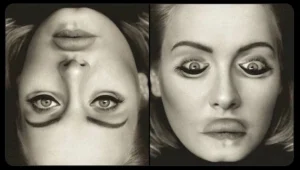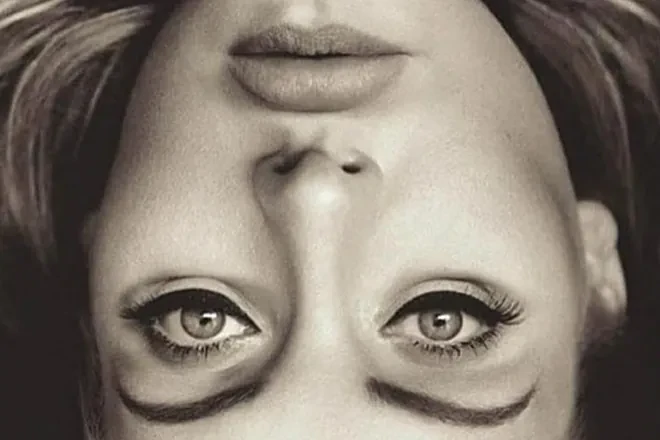Adele’s Viral Optical Illusion: Adele’s face has become the centerpiece of the latest viral optical illusion, known as the Thatcher Effect. This phenomenon, named after the late British Prime Minister Margaret Thatcher, plays tricks on our brains by making inverted facial features appear normal in upside-down images. However, once the image is flipped upright, the distortions become shockingly clear, leaving viewers baffled.
First described in 1980 by Professor Peter Thompson from the University of York, the Thatcher Effect initially appeared exclusive to Thatcher’s face. Over time, researchers discovered that it works universally, and Adele is the latest celebrity to illustrate this mind-bending trick.
Adele’s Viral Optical Illusion
The viral image of Adele shows her face upside down, with her eyes and mouth inverted. At first glance, it seems off, but not overtly disturbing. However, when flipped right-side up, the bizarre distortions are impossible to miss, leading to widespread shock and fascination.
Social media users took to platforms like X to share their reactions, with comments ranging from, “This broke my brain,” to “Adele, but make it nightmare fuel.” Adele’s soulful voice and elegant appearance made her an unlikely subject for this unsettling optical quirk, but her fame has amplified the illusion’s reach, making it a trending topic across platforms.
The Science Behind the Illusion

The Thatcher Effect works because of the way our brains process faces. Specialized cognitive mechanisms are wired to recognize upright faces, focusing on the spatial relationships between features—like the distance between the eyes and the alignment of the mouth. When a face is inverted, these mechanisms don’t function as effectively, masking abnormalities like flipped eyes or rotated mouths.
This illusion isn’t just a social media novelty. It’s a critical tool in psychological and neurological research. Scientists use it to study facial recognition, cognitive development, and how the brain interprets visual information. The effect highlights how deeply ingrained face perception is in human cognition, demonstrating how even minor disruptions can challenge our understanding of reality.
The Power of a Viral Psychological Phenomenon
While Adele’s image has taken over the internet, the Thatcher Effect has gone viral before. Clinical psychologist Dr. Julie Smith previously demonstrated it with other celebrity faces, including Barack Obama and Kanye West, on TikTok. Her videos, which encouraged viewers to flip their phones to reveal the eerie distortions. And garnered millions of views and sparked widespread intrigue.
In Adele’s case, the viral moment underscores the intersection of pop culture and science. Fans are simultaneously entertained and educated, with many expressing newfound appreciation for the complexities of the human brain.
As social media continues to spotlight phenomena like the Thatcher Effect, they serve not only as sources of fascination but also as valuable entry points for deeper discussions about psychology, perception, and the mysteries of human cognition.





